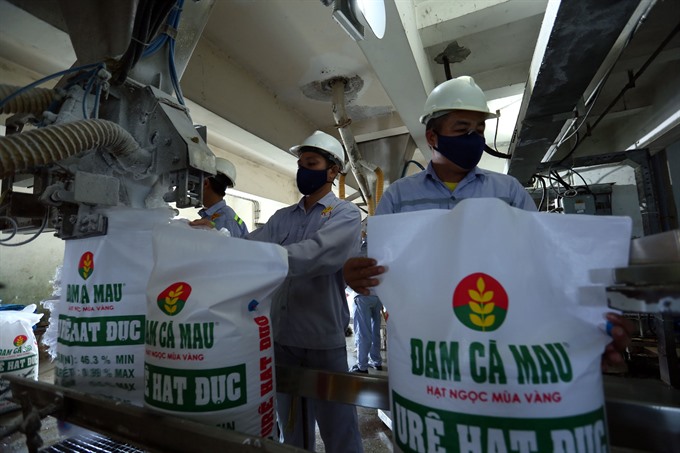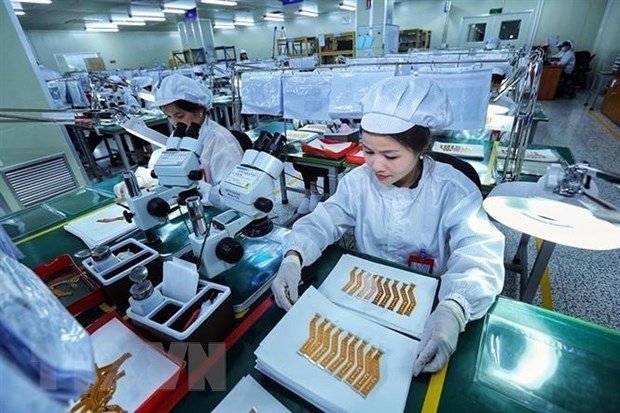 Society
Society

Some farmers in the south central province of Ninh Thuận have gone green.
 |
| The agricultural sector of Việt Nam consumes some 11 million tonnes of fertiliser annually. – VNA/VNS Photo Huy Hùng |
HÀ NỘI — Some farmers in the south central province of Ninh Thuận have gone green.
Watermelon farmers in An Hải Commune, Ninh Phước District have made use of muck and agricultural waste mixed with a fungus called Trichoderma to make natural fertilizer, in a process that only takes two months.
Nguyễn Văn Lai, a local farmer, said that the organic fertiliser is safe for the air, soil and people living near the planting area. Plant productivity also doubles compared with using inorganic fertiliser and pesticides.
Using agricultural waste to make organic fertilizer also helps cut costs, which combined with the improved productivity brings about twice as much profit.
The move is a trend a lot of Vietnamese farmers are following and is also a direction endorsed by the Ministry of Agriculture and Rural Development
Minister of Agriculture and Rural Development Nguyễn Xuân Cường said the agricultural sector must speed up the production, usage and consumption of organic fertiliser and reduce the amount of inorganic fertiliser. This move aims to improve plant productivity, quality and aid the environment.
Trần Thế Hinh, Low Carbon Agricultural Support Project (LCASP) said that last year Việt Nam imported more than 3.7 million tonnes of fertiliser worth US$960 million. In the first five months of this year, the country imported 1.8 million tonnes of fertiliser, down 8.8 per cent compared to the same period last year.
This showed that Việt Nam has switched from using inorganic fertiliser to self-made organic fertiliser, he said.
He said that 40 million tonnes of straw, corn and sugar cane residue and other kinds of post-harvest waste are discharged every year. The farming sector releases 80 million tonnes of waster each year. Farmers can use this waste to make organic fertiliser.
Nguyễn Đăng Nghĩa, director of Tropical Agriculture Consultation and Research Centre said that all kinds of microorganism fertiliser, organic microorganism fertiliser and probiotics are good for plants and preserve soil.
Lý Văn Sơn, deputy director of Ecofarm, said microorganism fertiliser is made from manufacturing industry waste such as residue of beer, soy beans or fish bones mixed with microorganisms. Each kg of microorganism organic fertiliser contains 140 types of nutrition.
For two months, the mixture must be isolated from air, otherwise, it will turn into soil and lose its nutritious elements. After composting, the organic fertiliser must be packaged and isolated from the air, he said.
To make 11 tonnes of organic fertiliser to replace currently-used inorganic fertiliser, enterprises need a large-scale technology line to ensure fertiliser quality, he said.
Potential business
According to the Ministry of Agriculture and Rural Development, Việt Nam’s farming sector uses 11 million tonnes of fertilisers only 8 per cent of which is organic.
Minister Nguyễn Xuân Cường said fertiliser plays a key role in farming. Việt Nam has 10 million ha of farmland. Organic production covers only 43,000 ha of land which means organic fertiliser has not been widely used.
If each ha of farmland needs 10 tonnes of organic fertiliser, it is estimated Việt Nam needs 200 million tonnes of organic fertiliser to have safe products, recover soil and protect the environment.
Many fertiliser enterprises have switched to manufacturing organic fertiliser such as Bình Điền fertiliser company, PetroVietnam Fertilizer and Chemicals Corporation, WEHG bio-fertiliser company, Ecofarm and Quế Lâm Corporation.
Fertiliser businesses have also thought about exporting organic fertiliser.
Nguyễn Minh Sơn, deputy director of Bình Điền Fertiliser Company said Việt Nam’s organic fertiliser is competing with that of ASEAN countries such as Myanmar, Cambodia and Laos.
Fertiliser companies need to focus on quality to keep their place in domestic and global market, he said.
Fight against fake fertiliser
Lý Văn Sơn, deputy director of Ecofarm said to create conditions for the development of organic fertiliser, agencies must fine companies which make fake fertiliser.
As of December 2017, Việt Nam had 713 organic fertiliser products manufactured by 180 licensed facilities. These facilities can produce up to 2.5 million tonnes of fertiliser per year.
The Ministry of Agriculture and Rural Development has launched policies to encourage organic fertiliser production and consumption from available domestic materials. The ministry has also created favourable investment and production conditions for organic fertiliser companies.
Minister Cường said that between 2020 and 2030, the ministry plans to set up national planning on fertiliser production which looks to larger production and consumption of organic fertiliser.
“The ministry will attract more investment and take advantage of sources from developed countries and international organisations to transfer and apply latest technology,” he said. — VNS









